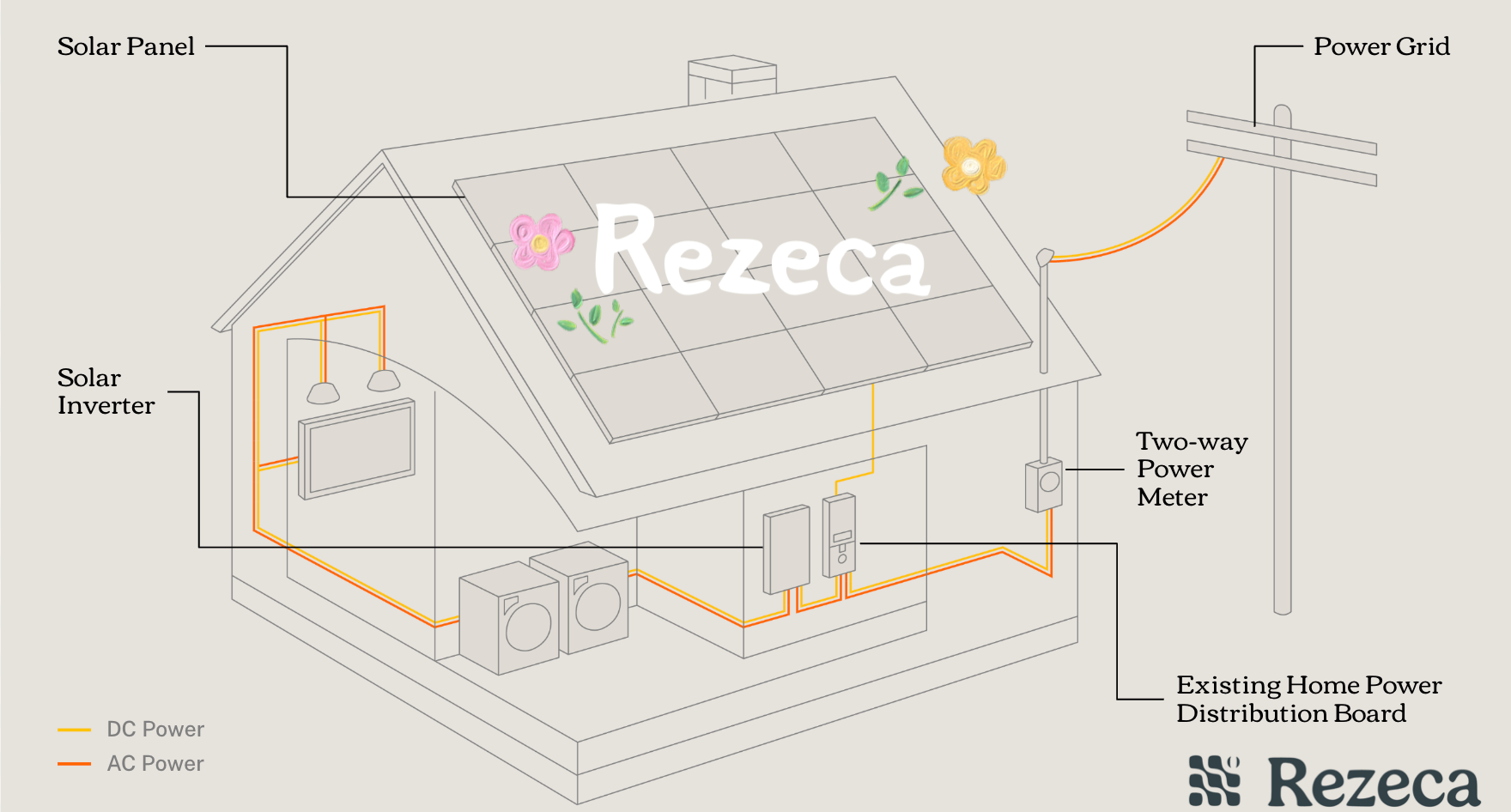Are you a landed property owner in Singapore considering a solar PV system on your roof? Let’s dive into the financial benefits and ROI calculations to show you why this investment is a game-changer for your wallet and the environment.
Why Invest in Solar PV?
Switching to solar energy isn’t just about going green; it’s about maximising your financial returns. Here’s a breakdown of how investing in a solar PV system can pay off handsomely.
Sample System Overview
System Size: 18kWp
(40 pieces of 450Wp panels +15KTL inverter)
Annual Sun Hours: 1200 hours

Financial Scenarios and ROI
Worst Case: 100% Export to Grid
Even if you export all the generated energy to the grid, you earn approximately $5,038.56 per year.
•Annual Earnings: $5,038.56
18kWp*1200hrs=21,600kWh, 21,600kWh*$0.2333 (SP current export rate) = $5,038.56
•ROI (Return On Investment): 350%-400% (Estimated 25 Years Savings- Invoice Amount) / Invoice Amount
•Payback Period: 5.08 years
Scenario 2: 50% Self-Consumption
Half of the generated energy is used in your home during the day, and the rest is exported.
•Annual Savings from Self-Consumption: $3,517.56
•Annual Earnings from Export: $2,518.44
•Total Annual Benefits: $6,036
•ROI: 400%-450%
•Payback Period: 4.29 years
Scenario 3: 70% Self-Consumption
Increase your self-consumption to 70%, and watch the benefits grow.
•Annual Savings from Self-Consumption: $4,928.57
•Annual Earnings from Export: $1,511.57
•Total Annual Benefits: $6,440.14
•ROI: 450%-500%
•Payback Period: 4.03 years
Best Case: 100% Self-Consumption
Maximize your savings by using all the generated energy in your home.
•Annual Savings from Self-Consumption: $7,035.12
•ROI: 500%-550%
•Payback Period: 3.70 years
Annual Electricity Inflation Impact
Considering an annual electricity inflation rate of 1.00%, your savings will increase year over year, further enhancing the ROI. Here’s a snapshot of how the ROI holds strong over a 25-year period:
•Worst Case ROI: 372%
•50% Self-Consumption ROI: 445.6%
•70% Self-Consumption ROI: 475.6%
•Best Case ROI: 519.1%
Why a Larger System Means Greater Returns
Now, imagine scaling up your system to 27kWp. With this larger system, your annual energy production increases to 32,400 kWh. This means significantly higher savings and earnings. For example, in the best-case scenario of 100% self-consumption, your annual savings could soar to $10,552.68. This results in an even shorter payback period of just 3.1 years.
Investing in a larger solar PV system not only accelerates your ROI but also amplifies your long-term financial benefits. The economies of scale make the additional investment highly rewarding, ensuring that your household enjoys even greater returns from your solar energy system.
Take Action Now!
The numbers speak for themselves. Investing in a solar PV system for your landed property in Singapore not only offers substantial financial returns but also ensures energy security and contributes to a sustainable future.
1. Contact Us Today: Schedule a consultation to assess your property’s potential.
2. Get Your Customised Proposal: Receive a detailed panel design and ROI analysis tailored to your home.
3. Seamless Installation: Our expert team handles everything from start to finish.
4. Start Saving: Enjoy lower electricity bills and impressive returns on your investment.
Don’t Miss Out!
Investing in solar energy is a smart move for your finances and the environment. WhatsApp us now at 9839 9044 or drop us an email at enquiry@rezeca.com to begin your journey to significant savings and a brighter future.
Harness the power of the sun, maximise your savings, and enjoy the financial freedom that comes with a solar PV system. Make the switch today!



